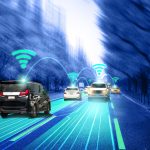Key Takeaways
- Spring and summer are peak hail seasons in Texas, with April typically seeing the most hail events due to atmospheric instability caused by colliding warm and cool air masses.
- Texas leads the U.S. in hail-related insurance claims, with over 1.5 million claims from 2018 to 2022—highlighting the real financial risk hail poses to vehicle owners.
- Even minor hail damage can have major consequences, including reduced resale value, increased insurance premiums, and safety issues if windshield chips or cracks go unrepaired.
- Certain Texas regions—like DFW, San Antonio, and Central Texas—are more hail-prone, meaning drivers in these areas should be especially proactive about vehicle protection.
- US Hail Repair offers a network of trusted locations across Texas, specializing in Paintless Dent Repair (PDR) and glass services, making it easy to restore your vehicle after a storm.
In Texas, if you don’t like the weather—just wait five minutes. That old saying rings especially true when spring and summer roll around. One day it’s sunny and 80 degrees; the next, you’re ducking for cover under a gas station awning while golf ball-sized hail pelts your vehicle.
For drivers across the Lone Star State, hail season isn’t just a quirky weather phenomenon—it’s a costly, recurring threat. And while hailstorms might seem random, there’s a method behind the madness. Spring and summer create the perfect storm for, well, storms. Understanding why can help you better protect your vehicle—and your wallet.
The Science Behind Hail Formation
Hail forms inside strong thunderstorms—specifically those with intense updrafts and plenty of moisture. Here’s how it works:
- Thunderstorm updrafts pull water droplets high into the atmosphere.
- The higher they go, the colder it gets—eventually freezing the droplets into ice.
- These hailstones grow as more moisture collects and freezes around them.
- Eventually, gravity wins, and the stones fall—often before melting—hitting the ground (and everything on it) with force.
Texas is uniquely positioned for this type of storm activity. Warm, humid air from the Gulf of Mexico regularly collides with cool, dry air from the west or north, creating volatile conditions. Add in the state’s massive size and diverse terrain, and you’ve got a perfect breeding ground for powerful, hail-producing storms.
Spring vs. Summer: Which Season Is Riskier?
While hailstorms can happen year-round, spring and summer dominate when it comes to frequency and severity.
Spring (March–May)
Spring is prime time. It’s when the atmosphere is most unstable—thanks to rapidly warming temperatures clashing with lingering winter air masses. The result? Supercell storms that bring lightning, high winds, tornadoes, and hail.
According to the National Oceanic and Atmospheric Administration (NOAA), March through May historically sees the highest concentration of large hail events in Texas. April alone accounted for over 100 confirmed hail events in 2023.
Summer (June–August)
While fewer storms form overall in summer, the ones that do can be especially damaging. Heat adds energy to storm systems, fueling quick-forming, high-impact hailstorms. And because summer storms tend to develop suddenly in the afternoon or early evening, many people are caught off guard—with their vehicles exposed in driveways, parking lots, or on the road.
The Storm History Says It All
If you need proof that hail season is serious business in Texas, look no further than recent history:
- April 2016 – San Antonio: A devastating hailstorm caused an estimated $1.4 billion in damage. Some hailstones were up to 4.5 inches in diameter.
- May 2021 – DFW Area: Parts of North Texas were hit with hail the size of baseballs. Thousands of insurance claims flooded in, many for both roof and vehicle damage.
- June 2023 – Central Texas: A line of severe storms brought hail and high winds across the I-35 corridor, damaging thousands of vehicles between Austin and Waco.
Texas leads the nation in hail-related insurance claims, according to the Insurance Information Institute. From 2018 to 2022, the state logged over 1.5 million hail claims—more than double the next closest state.
Hail Hotspots Across Texas
Some areas in Texas are more vulnerable than others. Here are just a few of the state’s hail-prone zones:
- Dallas–Fort Worth Metroplex: The urban sprawl means more vehicles, more buildings, and more expensive claims.
- San Antonio & Central Texas: Regularly in the path of Gulf-driven storms.
- West Texas (Lubbock, Abilene): Wide open spaces make storms easier to track—but harder to avoid.
- Austin to Waco Corridor: Experiences high storm frequency in both spring and early summer.
These zones don’t just deal with the occasional hailstorm—they get hit repeatedly.
Why This Matters for Your Vehicle
You may think a few dings or a chipped windshield are no big deal—but hail damage is more than cosmetic.
- Cost: The average hail damage repair runs from $2,500 to $5,000 depending on the severity.
- Resale value: Unrepaired damage hurts trade-in offers and car value.
- Insurance premiums: Too many claims? You could see your rates rise.
- Glass integrity: A single chip in your windshield can weaken the entire structure, especially under the strain of summer heat.
How to Prepare for Hail Season
You can’t stop hail from falling—but you can reduce the risk of major damage:
- Use covered parking: Garages, carports, or even parking garages when away from home.
- Get weather alerts: Sign up for storm notifications from local weather apps or NOAA.
- Inspect your car regularly: After any storm, check for new dents, chips, or cracks.
- Don’t wait to repair: Many dents can be fixed with Paintless Dent Repair (PDR) if addressed early. The same goes for chips in your windshield before they spread.
Where to Go After the Storm
If you find yourself dealing with hail damage, don’t stress—US Hail Repair has a network of trusted partner locations throughout Texas. Whether you’re in Austin, Weatherford, Irving, Sherman, or beyond, there’s a location ready to help.
Services include:
- Paintless Dent Repair (PDR)
- Windshield and auto glass repair
- Coordination with your insurance company
- Fast, professional service from experienced techs
Final Thoughts: It’s Not If—It’s When
Texas weather doesn’t play by the rules. One day it’s sunny, the next it’s storming. But when it comes to hail season, you don’t have to be caught off guard.
Understanding the science, tracking the patterns, and knowing where to turn for help can make all the difference. Spring and summer may be unpredictable—but your hail repair solution doesn’t have to be.
Your vehicle deserves the same protection as your home. Don’t gamble with Texas weather—be prepared, be alert, and know where to go after the storm.



